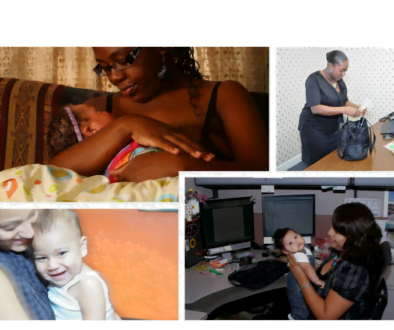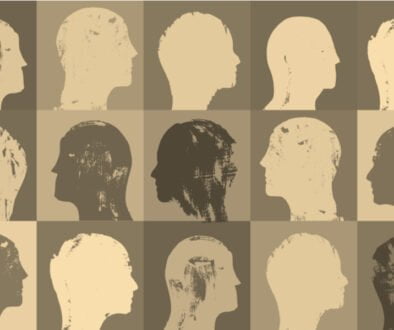How does discrimination impact chronic disease and mental health issues? Part I
Elaine MeyerThis is the first in a series of blogs featuring speakers from the Health Disparities Symposium at New York University School of Medicine, held in October 2016.
Tipping the scales of health inequities by creating healthy communities
 What did W.E.B. Du Bois mean when he linked “race and place” in his observations about the mortality rate for whites compared to blacks? Aletha Maybank, MD, MPH, Deputy Commissioner at the New York City Department of Health & Mental Hygiene and founding director of its Center for Health Equity, described Du Bois’ research in a keynote address at the Health Disparities Symposium, which focused on the evolution of policies and attitudes related to race and place—and a recent shift to bringing back Neighborhood Health Action Centers.
What did W.E.B. Du Bois mean when he linked “race and place” in his observations about the mortality rate for whites compared to blacks? Aletha Maybank, MD, MPH, Deputy Commissioner at the New York City Department of Health & Mental Hygiene and founding director of its Center for Health Equity, described Du Bois’ research in a keynote address at the Health Disparities Symposium, which focused on the evolution of policies and attitudes related to race and place—and a recent shift to bringing back Neighborhood Health Action Centers.
Dr. Maybank explained how data mapping and surveillance led to an awareness of the causes of high burdens of disease for African Americans. At the turn of the 20th century, she said, “The popular theory was that blacks were responsible for making the city unhealthy and dangerous.” The first time this notion started chipping away came with the 1899 publication of a report by then-Harvard graduate student W.E.B. Du Bois. He wrote about the health of African Americans in Philadelphia. By collecting and mapping data on the mortality rate for whites compared to blacks—many of them former slaves—Du Bois pointed to the link between race and place for health. Blacks’ health problems were linked to “dwell[ing] in the most unhealthful parts of the city and in the worst houses,” Du Bois wrote.
By the 1960s, efforts to reduce health inequity focused on building healthy communities. The 1960s saw the establishment of community health centers, which were an outgrowth of the Civil Rights Movement. According to Dr. Maybank these centers found some of their biggest champions in the Black Panthers—a legacy that has often been overlooked.
Today, the New York City Health Department is “reinvent[ing] the old neighborhood health movement to meet the needs of the 21st century, opening Neighborhood Health Action Centers soon in East Harlem, Brownsville, Brooklyn, and Tremont— communities with high rates of chronic disease,” said Dr. Maybank. This reinvention is motivated by the great health disparities among New York City neighborhoods. The Health Department has offered visuals of these disparities in “community health profiles” which map health statistics by neighborhood, using the extensive health data that New York City collects. For instance, four times the number of babies die in the first year of life in the majority African-American neighborhoods of Brownsville and Jamaica, compared with Greenwich Village. In the Rockaways, the average resident lives 10 years less than the average resident of Stuyvesant Town or the Financial District.
The Neighborhood Health Action Centers are part of New York City’s plan to bring more health and community services to New Yorkers. The Action Centers will bring community-based organizations and Health Department staff and programs under one roof to provide healthcare, wellness programs, space for groups to work on neighborhood health planning, and links to social services. The idea, Dr. Maybank explained, is to move beyond the, “traditional model of primary care, which addresses individual health needs, to an integrated holistic and public health approach to primary care.”
More than 200 attendees gathered at the Health Disparities Symposium at NYU School of Medicine in October 2016 to explore the ways in which discrimination based on race, ethnicity, and sexual orientation and gender identity has a direct impact on chronic disease and mental health. Sponsored by the Department of Population Health, the Office of Diversity Affairs, and the NYU-Health + Hospitals Clinical and Translational Science Institute, the symposium gave special attention to the broad range of health disparities research and action taking place across the School of Medicine, NYC Health + Hospitals, and New York City and the ways these health issues are being addressed in New York City. Read more about the Symposium here.
*Unless authored by IAPHS Staff, posts reflect views of individual authors, not those of IAPHS.
About the Coauthor: Patricia Dempsey
 Editorial consultant Patricia Dempsey, MA, Johns Hopkins and member, American Society of Authors and Journalists, contributes to national publications.
Editorial consultant Patricia Dempsey, MA, Johns Hopkins and member, American Society of Authors and Journalists, contributes to national publications.






All comments will be reviewed and posted if substantive and of general interest to IAPHS readers.